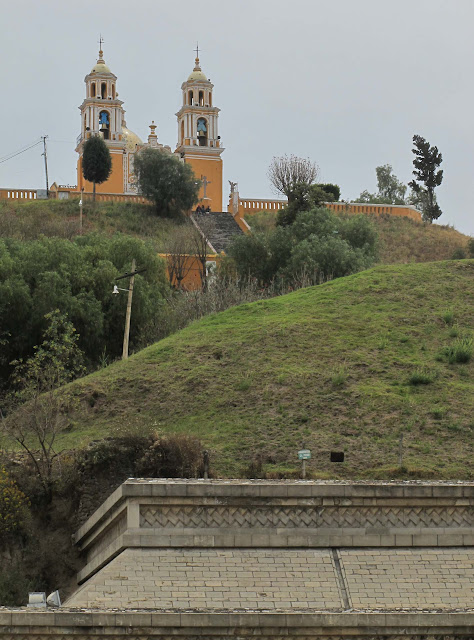The Museo de los Pintores Oaxaqueños in coordination with Lourdes
Sosa Gallery, Black Coffee Gallery Foundation and private collectors of the
artist Rafael Coronel present the exhibition Retrofutura II. The 43 pieces in the exhibition,
including oils, acrylics and bronze sculptures, which were previously displayed
in the tribute exhibition on the occasion of his 80th birthday by the Palace
Museum of Fine Arts in Mexico City.
Rafael Coronel was born in 1931 in Zacatecas and is younger
brother of the painter and sculptor Pedro Coronel and son-in-law of Diego
Rivera (1886-1957). He well
represents the Ruptura (Rupture) movement in Mexico, also known as Nueva
Presencia (New Presence). The movement consisted of a shift away from heroic
Muralism toward a more traditional way of art. Coronel created paintings that
lacked the forceful social statements of the Muralists' works. Coronel's
paintings are ambiguous and suggest that man's efforts to control his destiny
are futile. His paintings of old men and women, isolated and floating in
nebulous space, have a melancholic sobriety, and include faces from the past
great masters, often floating in a diffuse haze. His paintings contain echoes of Goya and José Clemente
Orozco and achieve dramatic effects through a skilful use of chiaroscuro (an Italian term which literally means light-dark)
and tenebrist effects (from the Italian word "tenebroso" meaning dark
describes a style of painting characterized by deep shadows and distinct
contrast between light and dark). The psychology of the characters is captured
with accuracy, and their appearance is carefully depicted, but the background
in which they appear imbues them with an air of timelessness.
The vocation of being a painter was something hereditary for
Rafael. His grandfather used to decorate churches. When his father told him
that pedro, his brother, was studying to become a painter in Mexico city, he
though it was one of the greatest wastes of time, because painters got no money
from painting, even the greatest painters in Mexico had to appeal to other
jobs. When Rafael went to Mexico City
he wanted to be a soccer player but after he arrived he became interested in
architecture. In 1952 he won a scholarship in a painting contest with a work
done with crayons.
He has also assembled in Zacatecas, in the restored convent of
San Francisco, an important collection of masks from all over Mexico. He has lived in the city of Cuernavaca
since 1981. For more pictures from the exhibition please visit my picasa web album.





















































